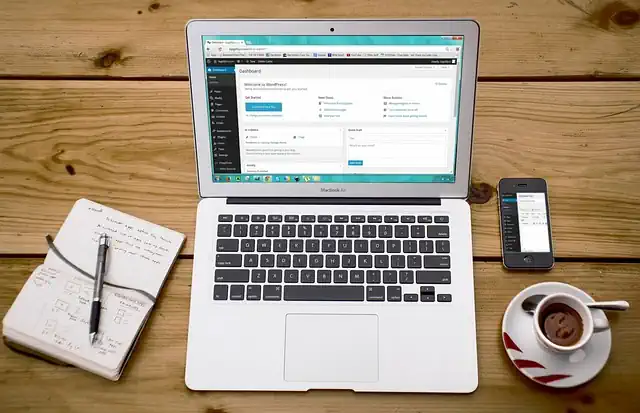How To Save Money Easy
Introduction


Introduction: Saving money is an essential aspect of financial planning. It helps you to achieve your financial goals and secure your future. However, saving money can be challenging, especially if you don’t have a plan or strategy. In this article, we will discuss some easy ways to save money that you can implement in your daily life.
10 Simple Ways to Cut Your Monthly Expenses
Saving money can be a daunting task, but it doesn’t have to be. With a few simple changes to your daily routine, you can cut your monthly expenses and start building your savings. Here are 10 easy ways to save money:
1. Make a budget: The first step to saving money is to know where your money is going. Make a budget and track your expenses to see where you can cut back.
2. Cook at home: Eating out can be expensive, so try cooking at home instead. Not only is it cheaper, but it’s also healthier.
3. Use coupons: Coupons can save you a lot of money on groceries and other household items. Look for coupons online or in your local newspaper.
4. Cancel subscriptions: Do you really need that magazine subscription or streaming service? Cancel any subscriptions that you don’t use or need.
5. Shop around for insurance: Insurance can be a big expense, but you can save money by shopping around for the best rates.
6. Use public transportation: If you live in a city with public transportation, consider using it instead of driving. It’s cheaper and better for the environment.
7. Buy generic: Generic brands are often just as good as name brands, but they’re much cheaper. Try buying generic products to save money.
8. Cut back on utilities: You can save money on your monthly bills by cutting back on your utilities. Turn off lights when you’re not in the room and unplug electronics when you’re not using them.
9. Use cash: Using cash instead of credit cards can help you avoid overspending. Set a budget for yourself and only use cash for your purchases.
10. Sell unused items: Do you have items in your home that you no longer use or need? Sell them online or at a garage sale to make some extra cash.
By implementing these simple changes, you can start saving money and building your savings. Remember, every little bit counts, so don’t be afraid to make small changes to your daily routine. With a little effort, you can cut your monthly expenses and achieve your financial goals.
The Ultimate Guide to Couponing for Beginners
Are you tired of constantly feeling like you’re living paycheck to paycheck? Do you want to start saving money but don’t know where to begin? Look no further than couponing! Couponing is a great way to save money on everyday items and can be done by anyone, regardless of their income level. In this ultimate guide to couponing for beginners, we’ll cover everything you need to know to start saving money today.
First things first, where do you find coupons? There are a variety of sources for coupons, including newspapers, magazines, online coupon websites, and even social media. Many stores also offer their own coupons, which can be found in their weekly ads or on their websites. It’s important to note that not all coupons are created equal – some may have restrictions or expiration dates, so be sure to read the fine print before using them.
Once you’ve gathered your coupons, it’s time to start planning your shopping trips. Take a look at the weekly ads for your favorite stores and see what items are on sale. Then, match up your coupons with those sale items to maximize your savings. This is called “stacking” coupons and can result in significant discounts on your purchases.
Another way to save money through couponing is to sign up for loyalty programs at your favorite stores. These programs often offer exclusive coupons and discounts to members, as well as rewards for frequent purchases. Some stores even offer cash back on purchases made with their loyalty cards.
If you’re new to couponing, it can be overwhelming to keep track of all your coupons and deals. That’s where organization comes in. Consider investing in a coupon binder or folder to keep your coupons organized by category or expiration date. This will make it easier to find the coupons you need when you’re at the store.
It’s also important to be mindful of your budget when couponing. Just because something is on sale or you have a coupon for it doesn’t mean you need to buy it. Stick to your shopping list and only purchase items that you actually need or will use. Otherwise, you may end up spending more money than you intended.
Finally, don’t be afraid to ask for help or advice from other couponers. There are many online communities and forums dedicated to couponing, where you can find tips and tricks from experienced couponers. You can also ask store employees for advice on how to maximize your savings at their store.
In conclusion, couponing is a great way to save money on everyday items. By gathering coupons, planning your shopping trips, signing up for loyalty programs, staying organized, being mindful of your budget, and seeking advice from other couponers, you can start saving money today. Happy couponing!
5 DIY Home Improvement Projects That Will Save You Money
Are you looking for ways to save money around the house? Look no further than these five easy DIY home improvement projects that will not only save you money, but also add value to your home.
1. Install a Programmable Thermostat
One of the easiest ways to save money on your energy bill is by installing a programmable thermostat. This device allows you to set the temperature in your home based on your schedule, so you can save money by not heating or cooling your home when you’re not there. Plus, it’s easy to install and can be done in just a few hours.
2. Replace Your Light Bulbs
Another easy way to save money is by replacing your old incandescent light bulbs with energy-efficient LED bulbs. These bulbs use less energy and last longer, which means you’ll save money on your energy bill and won’t have to replace them as often. Plus, they come in a variety of colors and styles, so you can find the perfect bulb for your home.
3. Install Low-Flow Showerheads and Faucets
If you’re looking to save money on your water bill, consider installing low-flow showerheads and faucets. These devices use less water than traditional fixtures, which means you’ll save money on your water bill without sacrificing water pressure. Plus, they’re easy to install and can be done in just a few minutes.
4. Seal Your Windows and Doors
If you’re feeling a draft in your home, it’s likely that your windows and doors are not properly sealed. This can lead to higher energy bills and a less comfortable home. To fix this, simply apply weatherstripping or caulking around your windows and doors to seal any gaps. This will help keep your home warm in the winter and cool in the summer, which means you’ll save money on your energy bill.
5. Insulate Your Attic
If you’re looking to save money on your energy bill in the long-term, consider insulating your attic. This will help keep your home warm in the winter and cool in the summer, which means you’ll save money on your energy bill year-round. Plus, it’s easy to do and can be done in just a few hours.
In conclusion, there are many easy DIY home improvement projects that can help you save money around the house. From installing a programmable thermostat to insulating your attic, these projects are easy to do and can be done in just a few hours. So why not start saving money today?
How to Meal Plan and Save Money on Groceries
Are you tired of constantly overspending on groceries? Do you want to save money without sacrificing the quality of your meals? Meal planning is the answer! Not only does it save you money, but it also saves you time and reduces food waste. Here are some tips on how to meal plan and save money on groceries.
Firstly, take inventory of what you already have in your pantry, fridge, and freezer. This will help you avoid buying unnecessary items and ensure that you use up what you already have. Make a list of the items that you need to restock and prioritize them based on their importance.
Next, plan your meals for the week. This can be as simple or as detailed as you want it to be. You can plan breakfast, lunch, and dinner for each day, or you can simply plan dinners and have leftovers for lunch. Consider your schedule for the week and plan meals accordingly. If you have a busy day, plan for a quick and easy meal. If you have more time, plan for a more elaborate meal.
When planning your meals, consider using ingredients that can be used in multiple meals. For example, if you plan to make a stir-fry for dinner one night, use the leftover vegetables and protein to make a salad for lunch the next day. This will help reduce food waste and save you money.
Once you have your meal plan, make a grocery list. Stick to your list and avoid impulse purchases. If you see something that you want but is not on your list, ask yourself if you really need it. If not, put it back on the shelf.
Consider buying in bulk for items that you use frequently. This can save you money in the long run. However, be mindful of expiration dates and only buy what you know you will use.
When shopping, compare prices and look for sales. Consider buying generic or store-brand items instead of name-brand items. They are often just as good and cost less.
Another way to save money on groceries is to buy seasonal produce. Not only is it cheaper, but it is also fresher and tastier. Consider buying frozen fruits and vegetables as well. They are often cheaper than fresh produce and can be just as nutritious.
Finally, consider meal prepping. This involves preparing meals in advance and storing them in the fridge or freezer. This can save you time and money in the long run. You can also use leftovers from one meal to make another meal. For example, use leftover chicken from dinner to make a chicken salad for lunch the next day.
In conclusion, meal planning is a great way to save money on groceries. By taking inventory of what you already have, planning your meals, making a grocery list, buying in bulk, comparing prices, buying seasonal produce, and meal prepping, you can save money without sacrificing the quality of your meals. Happy meal planning!
The Benefits of Buying Used: Tips for Thrift Shopping
Saving money can be a daunting task, but it doesn’t have to be. There are many ways to cut back on expenses and make your money go further. One of the easiest ways to save money is by buying used items. Not only is it better for your wallet, but it’s also better for the environment. In this article, we’ll explore the benefits of buying used and provide tips for thrift shopping.
The Benefits of Buying Used
Buying used items can save you a lot of money. Whether you’re looking for clothing, furniture, or electronics, you can often find high-quality items at a fraction of the cost of buying new. Plus, buying used is better for the environment. When you buy used, you’re keeping items out of landfills and reducing the demand for new products.
Thrift Shopping Tips
Thrift shopping can be overwhelming, but with a few tips, you can make the most of your shopping experience. First, make a list of the items you need before you go. This will help you stay focused and avoid impulse purchases. Next, set a budget for yourself. It’s easy to get carried away when you see all the great deals, but you don’t want to overspend.
When you’re thrift shopping, it’s important to take your time and look through everything. You never know what treasures you might find. Be sure to check the quality of the items before you buy them. Look for any signs of wear and tear, and make sure everything is in working order.
Another tip for thrift shopping is to be open-minded. Don’t be afraid to try new styles or brands. You might be surprised at what you find. And if you’re not sure about something, don’t be afraid to ask for a second opinion. Many thrift stores have knowledgeable staff who can help you make informed decisions.
Finally, don’t forget to donate your own gently used items. Thrift stores rely on donations to keep their inventory stocked. Plus, donating your items is a great way to give back to your community.
Conclusion
Saving money doesn’t have to be difficult. By buying used items and thrift shopping, you can save money and help the environment at the same time. Remember to make a list, set a budget, take your time, and be open-minded. And don’t forget to donate your own gently used items. With these tips, you’ll be a thrift shopping pro in no time.
Maximizing Your Savings: Tips for Using Cashback Apps
Saving money can be a daunting task, but with the help of cashback apps, it can be a lot easier than you think. Cashback apps are a great way to earn money back on purchases you were already planning to make. Here are some tips for maximizing your savings with cashback apps.
First, do your research. There are many cashback apps available, and each one offers different rewards and benefits. Take the time to compare and contrast the different apps to find the one that best suits your needs. Some apps offer cashback on specific stores or products, while others offer a percentage back on all purchases. Make sure to read the fine print and understand the terms and conditions of each app before signing up.
Once you have chosen your cashback app, make sure to use it every time you make a purchase. Many apps offer rewards for signing up and making your first purchase, so take advantage of these offers. Also, make sure to link your credit or debit card to the app to ensure that you receive cashback on all eligible purchases.
Another tip for maximizing your savings with cashback apps is to stack your rewards. Many apps offer additional rewards for using their app in conjunction with other offers, such as coupons or discounts. Take advantage of these opportunities to earn even more cashback on your purchases.
It is also important to stay organized when using cashback apps. Keep track of your purchases and rewards to ensure that you are receiving the correct amount of cashback. Some apps offer features that allow you to track your rewards and monitor your spending, so make sure to take advantage of these tools.
Finally, make sure to redeem your rewards. Many cashback apps offer various ways to redeem your rewards, such as through gift cards or PayPal. Make sure to redeem your rewards regularly to avoid losing them or letting them expire.
In addition to these tips, there are also some common mistakes to avoid when using cashback apps. One mistake is forgetting to use the app when making a purchase. Make sure to check the app before making any purchases to ensure that you are eligible for cashback. Another mistake is not reading the terms and conditions of the app. Make sure to understand the rules and requirements of the app to avoid missing out on rewards.
In conclusion, cashback apps are a great way to save money on purchases you were already planning to make. By doing your research, using the app regularly, stacking rewards, staying organized, and redeeming your rewards, you can maximize your savings with cashback apps. Remember to avoid common mistakes and always read the fine print to ensure that you are getting the most out of your cashback app. With these tips, saving money has never been easier.
Creating a Budget: A Step-by-Step Guide to Saving Money
Saving money can be a daunting task, but it doesn’t have to be. With a little bit of planning and discipline, anyone can create a budget and start saving money. In this article, we will provide you with a step-by-step guide to creating a budget that will help you save money easily.
Step 1: Determine Your Income
The first step in creating a budget is to determine your income. This includes all sources of income, such as your salary, bonuses, and any other income you may receive. Once you have determined your income, you can move on to the next step.
Step 2: List Your Expenses
The next step is to list all of your expenses. This includes everything from your rent or mortgage payment to your daily coffee. Be sure to include all of your expenses, no matter how small they may seem. This will give you a clear picture of where your money is going each month.
Step 3: Categorize Your Expenses
Once you have listed all of your expenses, it’s time to categorize them. This will help you see where you are spending the most money and where you can cut back. Some common categories include housing, transportation, food, entertainment, and debt repayment.
Step 4: Set Goals
Now that you have a clear picture of your income and expenses, it’s time to set some goals. This could be anything from paying off debt to saving for a vacation. Whatever your goals may be, make sure they are specific and measurable.
Step 5: Create a Plan
With your goals in mind, it’s time to create a plan. This may involve cutting back on certain expenses or finding ways to increase your income. Be sure to create a realistic plan that you can stick to.
Step 6: Track Your Progress
Once you have created a plan, it’s important to track your progress. This will help you see how well you are sticking to your budget and whether or not you need to make any adjustments. There are many budgeting apps and tools available that can help you track your progress.
Step 7: Make Adjustments
Finally, it’s important to be flexible and make adjustments as needed. If you find that you are overspending in a certain category, you may need to cut back in other areas. Remember, creating a budget is an ongoing process and requires discipline and commitment.
In conclusion, creating a budget is a simple and effective way to save money. By following these seven steps, you can create a budget that works for you and helps you achieve your financial goals. Remember, it’s important to be patient and stay committed to your budget in order to see results. With a little bit of planning and discipline, anyone can save money easily.
Conclusion
Conclusion: Saving money can be easy if you make a few simple changes to your spending habits. Start by creating a budget, cutting unnecessary expenses, and finding ways to save on everyday purchases. Small changes can add up over time and help you reach your financial goals. Remember to stay disciplined and committed to your savings plan, and you’ll be on your way to a more secure financial future.






